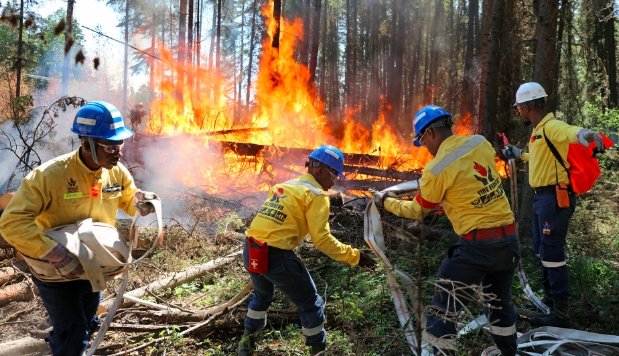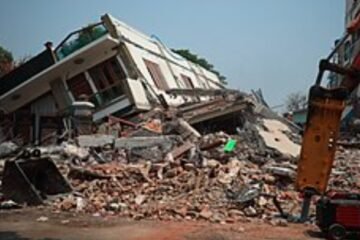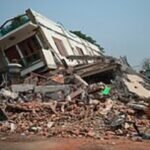TORONTO —
In a powerful signal of growing global urgency, Canada has entered into a strategic alliance with the United States, Greece, Australia, and Scotland to combat one of the world’s fastest-growing threats: wildfires.
The announcement, made Saturday morning, marks the most internationally coordinated wildfire prevention strategy in recent history. The partnership is rooted in shared investments, cross-border knowledge exchange, and a renewed focus on both Indigenous-led practices and cutting-edge technologies like AI risk mapping and drone-based surveillance.
For travelers and tourism operators alike, the message is clear: fire-resilient infrastructure and smarter risk management are no longer optional luxuries—they are the new gold standard for sustainable tourism in a warming world.
A Coalition Forged in Crisis
In recent years, each of the five nations has faced catastrophic wildfires:
-
Canada endured its worst fire season on record in 2023, with over 18.5 million hectares scorched.
-
Greece saw towns evacuated during multi-week infernos across Rhodes and Evia.
-
Australia, still haunted by the 2019–20 Black Summer, has ramped up fire mitigation efforts dramatically.
-
Scotland recorded its largest wildfire in history just weeks ago in the Highlands.
-
And the U.S., particularly the West Coast, has grappled with severe annual fire cycles since 2017.
What unites them isn’t just geography or climate change—it’s the realisation that no nation can fight this alone.
“Fire doesn’t respect borders, and neither should our solutions,” said Jean-François Tremblay, Deputy Minister for Natural Resources Canada. “This alliance is about more than money—it’s about trust, data, and doing the hard work together before the smoke ever rises.”

Canada’s $11.7 Million Wildfire Resilience Consortium
As part of the international effort, Canada is launching a new initiative at home: the Wildfire Resilience Consortium of Canada (WRCC). Backed by $11.7 million in federal funding, the WRCC will serve as a national hub connecting wildfire researchers, Indigenous fire stewards, first responders, and climate scientists.
Key goals include:
-
Prescribed Indigenous burns to manage forest undergrowth
-
AI-driven fire risk modeling
-
Cross-training with international fire services
-
Community resilience programs in high-risk zones
-
Real-time public alert systems to inform both residents and tourists
“Preparedness saves lives, saves forests, and saves economies,” said Environment Minister Stéphane Dupuis. “This investment isn’t just reactive. It’s transformational.”
A Lifeline for Tourism
The impact of wildfires on global tourism is no longer hypothetical. In Canada alone, the 2023 fires forced the closure of national parks in British Columbia, disrupted air travel, and led to mass cancellations in adventure-tourism regions like Alberta’s Banff and Jasper.
According to the World Travel & Tourism Council, wildfire disruptions cost the global tourism industry more than $16.4 billion in 2024. But travel isn’t just an economic casualty—it’s also a potential vector for resilience.
“Tourists are increasingly choosing destinations based on climate readiness,” said María Eleni Kyrkos, spokesperson for Greece’s Ministry of Tourism. “We’ve seen a 12% rise in travel inquiries focused on safety protocols and eco-preparedness. People want to enjoy nature—but not at the expense of their health or conscience.”
By aligning with like-minded nations, Canada signals its readiness to compete not just on beauty, but on safety, transparency, and climate strategy.
High-Tech Meets Tradition
Among the most striking features of the alliance is its focus on Indigenous-led fire management techniques—particularly the centuries-old practice of cultural burning.
In both Canada and Australia, Indigenous communities have long used low-intensity, controlled burns to clear brush and restore natural balance to ecosystems. These methods reduce flammable fuel loads, regenerate plant life, and protect sacred landscapes. Now, governments are giving these traditional systems the institutional support they deserve.
“We don’t fight fire—we guide it,” said Alex Redsky, a Cree fire knowledge keeper from Manitoba. “This collaboration means the world is finally listening.”
Meanwhile, researchers in Scotland and the U.S. are pioneering AI-based simulations that model fire behavior in real time. In one project led by the University of Edinburgh, algorithms trained on drone footage predict fire spread down to 10-meter resolution.
It’s this blend of ancestral wisdom and machine learning that gives the pact its edge.
Five Countries, One Flame
The wildfire accord also includes joint research exchanges, pooled emergency resources, and potential interoperability of fire-fighting aircraft and drones.
Australia, for instance, has offered to station additional air tankers in Canada during peak fire seasons, while the U.S. Forest Service will share satellite data with Greek civil protection authorities.
“Climate change is the fire, but partnership is the water,” said Scotland’s First Minister John Swinney, who has recently emphasized wildfire resilience after unprecedented Highland burns this summer.
Travel With Confidence
For globetrotters planning trips to forested destinations, this alliance offers not just peace of mind—but a new template for travel that respects the climate age.
Several travel firms, including Canadian eco-tourism startups and Greek island-hopping tour operators, have already begun branding themselves as “fire-prepared certified,” offering routes, accommodations, and packages vetted for wildfire readiness.
Meanwhile, government travel advisories will be updated in real time using shared data, giving travelers access to fire-risk dashboards and evacuation info across borders.
A Promise, Not Just Policy
In an era where natural beauty often feels like it comes with a disclaimer, this pact represents something rare: proactive, visible leadership.
“This is about keeping our forests open, our economies intact, and our children safe,” said Canada’s Tourism Minister Lorena Pataki. “And for travelers—it’s about knowing that the view you came to see will still be here tomorrow.”


















